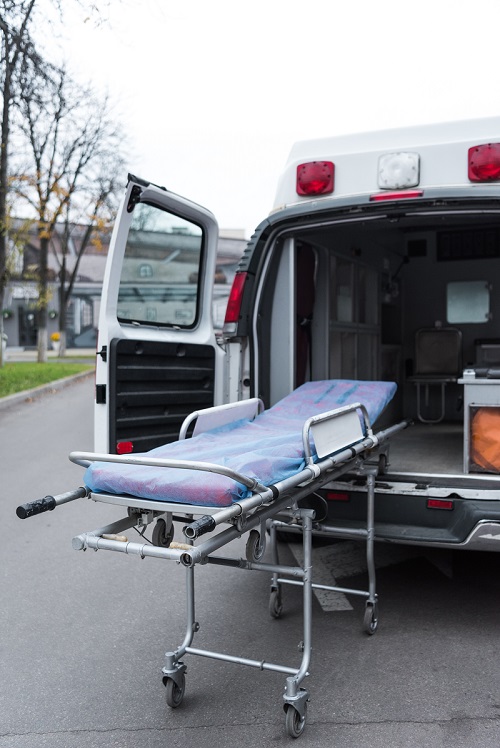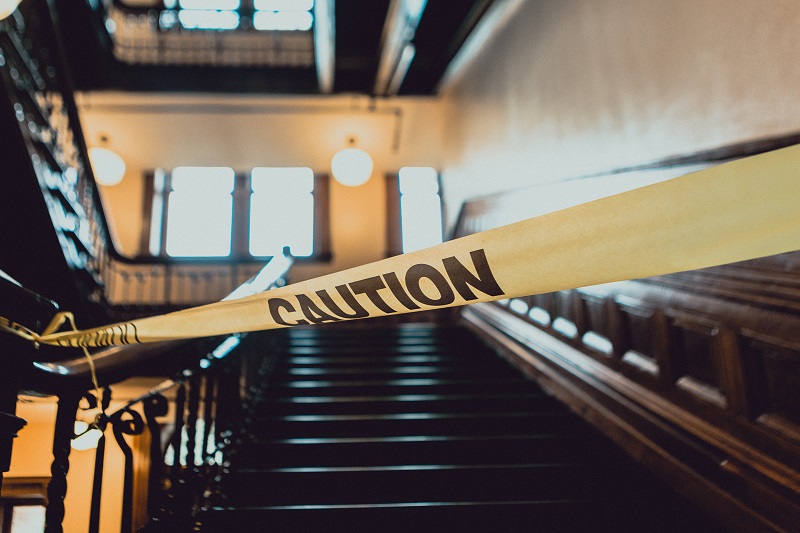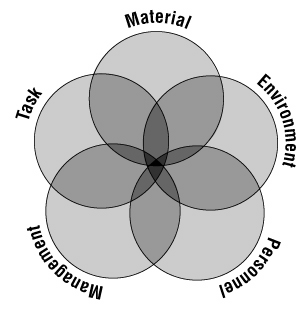The term “accident,” used interchangeably with “incident”, refers to an unplanned, random event that causes harm such as an injury, illness or even fatality. When it comes to occupational safety, employers should prevent accidents as much as possible.
Therefore, an OSHA accident investigation procedure has been developed that employers must follow to identify the hazards in their workplace immediately after the incident occurred and implement measures to reduce the risk of future incidents.
Here’s what you need to know about
- which incidents in the workplace require an accident investigation,
- which incidents in the workplace don’t require an accident investigation,
- what to do if an accident investigation is required, and
- how to identify the root causes.

Which Incidents in the Workplace Require Accident Investigations?
According to OSHA standards, there are certain accidents that require incident investigation. Recordkeeping must be done by filling out OSHA 300 and 300A forms and be kept for at least five years at the worksite.
Serious Injury
- An injury or illness requiring hospitalization for more than 24 hours (excluding medical observation),
- loss of any body part, or
- serious physical disfigurement.
Serious Exposure
- Exposure to a hazardous substance as a result of an accident, or
- exposure to a hazardous substance unknowingly over an extended period of time, and
- there is a high possibility that the exposure could lead to serious physical harm or even death in the future.
Catastrophe
- The simultaneous hospitalization of three or more employees due to the same occupational incident,
- and this can be for any amount of time.
Fatality
- Death of one or more employees as a direct result of injuries, illness or exposure at the workplace.
Close Call
- Incidents in the workplace where an accident could have occurred, and
- an employee could have been injured if the circumstances were slightly different.
Which Incidents in the Workplace Don’t Require Accident Investigations?
All accidents and incidents – regardless of intensity – must be investigated. The accident investigation process aids employers in looking beyond what happened to determine why it happened so they can correct and prevent future shortcomings.
There are limited incidents that don’t require incident investigation, including:
- an incident requiring first aid, or
- an injury or illness unrelated to the workplace (such as a heart attack or stroke).
Take note that workplace injuries and illnesses that don’t require investigation still need to be recorded.

What Should Be Done if an Accident Investigation Is Required?
A workplace’s safety committee and management are responsible for any incident investigation.
Employees must be made aware of who these people are and should be directed to report incidents compromising occupational safety and health to them immediately. All injuries, illnesses and close calls must be reported.
The safety committee and management must perform the incident investigation as soon as possible after it has been reported. Doing so quickly can prevent:
- the accident scene and evidence from being disturbed or disrupted,
- victims and witnesses forgetting over time, and
- similar incidents from occurring again.
Take note that the accident scene must be assessed and declared safe before investigators may proceed.
How To Investigate the Root Cause Compromising Occupational Safety
The root causes of an incident are interlinked and are grouped into categories: task, material, environment, personnel, and management.
Task
This category refers to the task being performed when the incident occurred.
- Did the employee use safe work procedures to perform the task?
- Were the safety devices and lockouts used correctly?
- Were the correct tools and materials used to perform the task?
- Was the employee wearing the appropriate personal protective equipment?
Material
This category addresses the equipment and materials used.
- Did the equipment fail?
- Was the raw material substandard?
- Were the safety devices and lockouts checked before the equipment was used?
Work Environment
This category is used to assess what caused an abnormal work environment.
- Were there poor weather conditions?
- Was there poor housekeeping?
- Was the light source inadequate?
- Was a workplace hazard incorrectly or inadequately indicated?
Personnel
This category questions the employee whose safety and health was compromised.
- Was the employee trained on safe operating procedures?
- Did the employee make use of the safe operating procedures correctly?
- Was there pressure to complete the task, such as a deadline?
- Was the employee fatigued due to shiftwork?
- Was the employee under stress from a personal or health problem?
Management
This category holds management and the systems they’ve put into place accountable.
- Were the correct safety rules and procedures put into place?
- Were they adequately communicated to, and understood by, employees?
- Were occupational hazards and risks identified and appropriately dealt with?
- Were regular inspections carried out, and was maintenance performed on equipment?
These questions should be followed up with “why not” if the answer indicates unsafe work practices or incidents.
Performing a root cause analysis as part of the incident investigation is crucial to developing a plan of corrective actions to prevent any future incidents.

How Insure Compliance Can Help
At Insure Compliance, we offer a unique Safety Gap Model to identify the safety gaps in your company and provide strategies to overcome them.
When it comes to incident investigation, the five gaps are as follows:
- Awareness gap: do you as the employer understand how to perform an accident investigation in the workplace?
- Process gap: are there policies and procedures documented that have been put in place?
- Knowledge gap: have employees been trained as a means of reinforcing these policies?
- Verification gap: is the workplace inspected to observe the behavior of employees?
- Accountability gap: are workers being held accountable for violating any workplace policies?
We offer incident investigation training to help you:
- create a report when an incident occurs,
- identify the root causes,
- develop a plan of corrective actions, and
- fill out insurance incident forms.
Key Takeaways
As an employer, you need to know which situations in the workplace do and don’t require an incident investigation. Serious injuries, serious exposure, catastrophes, fatalities and close calls require incident investigation, but anything simply requiring first aid does not.
If an incident investigation is required, employees should report it to the safety committee immediately so that the investigation can commence as soon as possible.
Questions surrounding the task, material, work environment, personnel and management must be asked to identify the root causes. Identifying the root causes is crucial to creating and implementing corrective plans.
Insure Compliance offers extensive training and can help you identify the safety gaps in the workplace. Contact us today, and we’ll help you bridge your safety gaps to reach OSHA compliance and increase workplace morale.
Disclaimer:
Please note that every effort has been made to ensure that the information provided in this guide is accurate. You should note, however, that the information is intended as a guide only, providing an overview of general information available to businesses. This guide is not intended to be an exhaustive source of information and should not be seen to constitute legal, safety or business advice. You should, where necessary, seek your own advice for any issues raised in your affairs.








